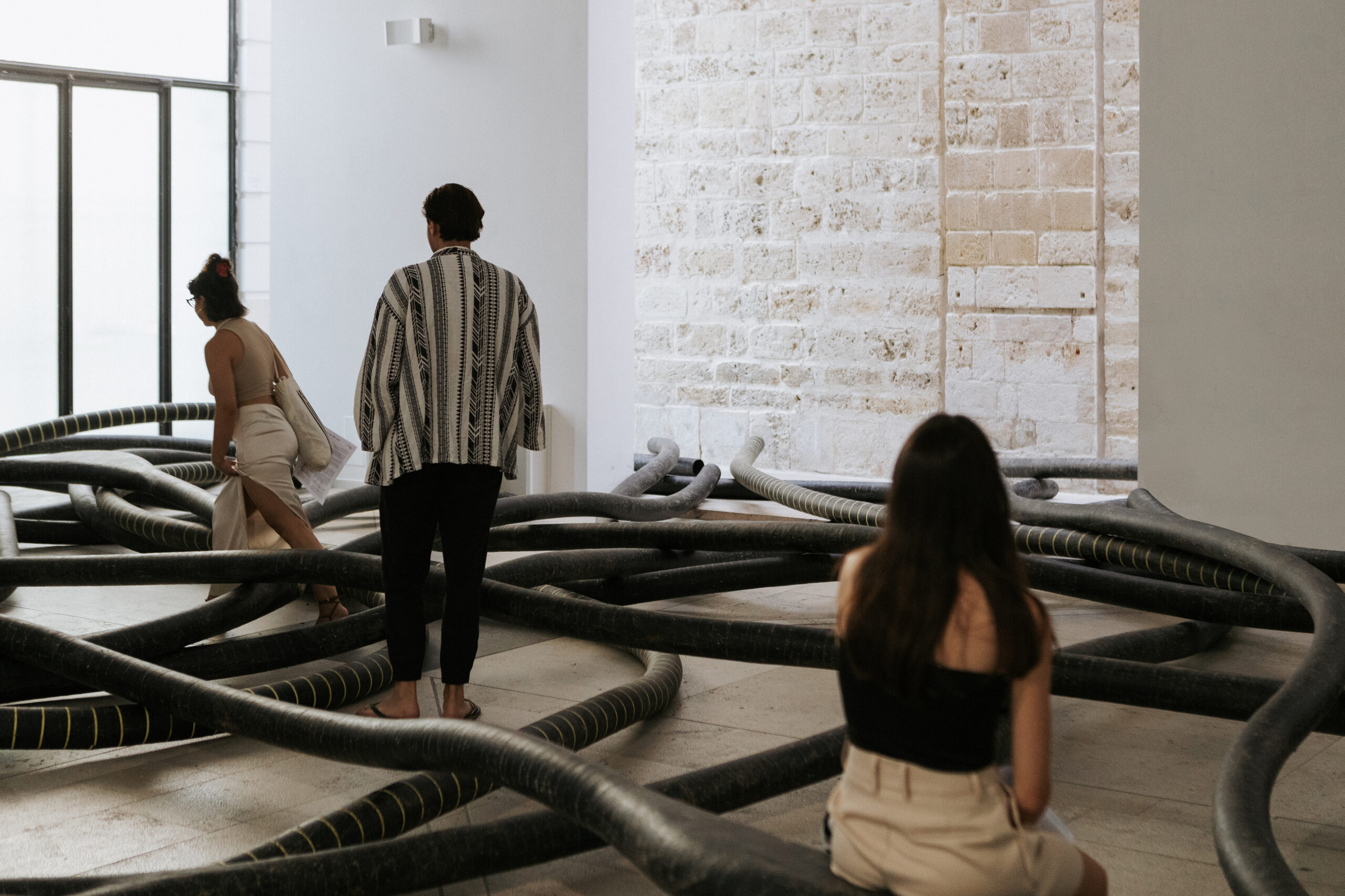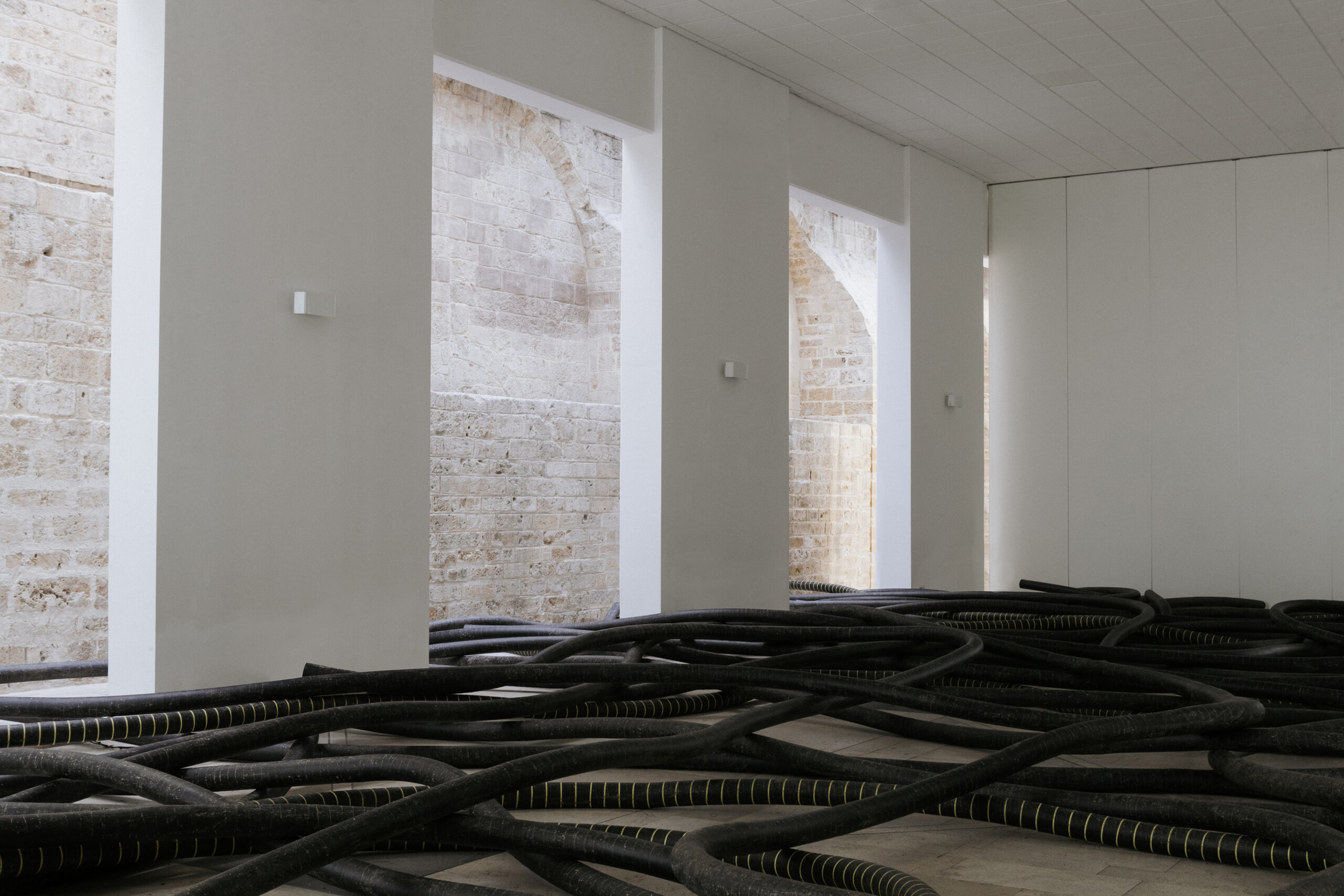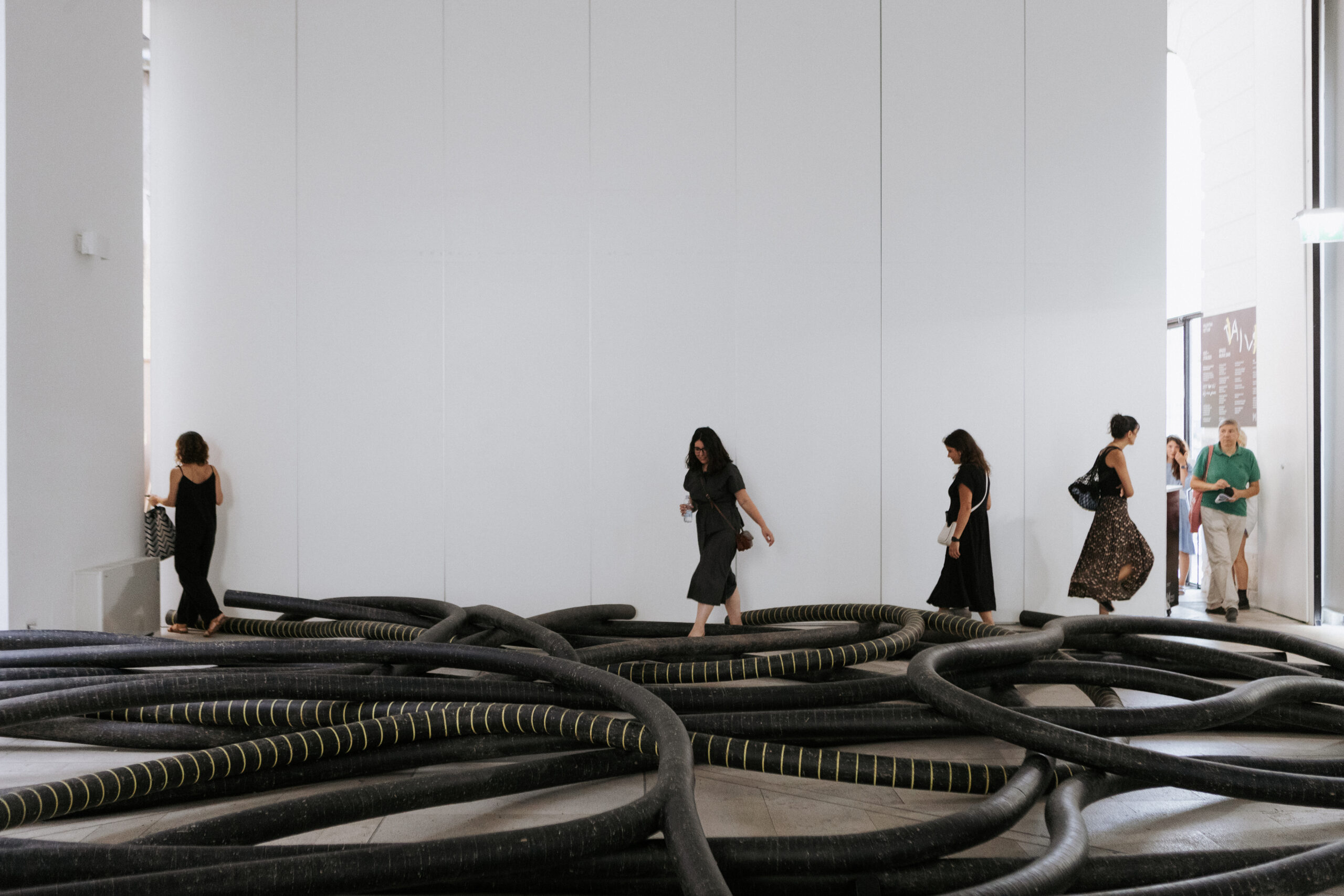The interview published here was conducted in the summer of 2023 and is part of the artist’s book released for the “Tails” exhibition by Valentina Vetturi, promoted by Spazio Murat Bari and curated by Silvia Franceschini.
Silvia Franceschini The sea as a connector of shores, cables as an actualisation of virtual ties and an image generated by an artificial Intelligence system are the main elements of the exhibition Tails. How have you conceived the different levels of this exhibition and how do you bring out from its geography a reflection on the specific space of the gallery and at the same time the virtual space?
Valentina Vetturi At the beginning of 2023 the estimate of submarine cables using fibre optic technology was about 552 for a total length of 1.4 million kilometres. What would we see, if all the cables that allow our connections reached the surface and surfaced in an enclosed space? We would experience a dance of cables, a dance between the cables that allow our digital lives.
Tails was born with this premise.
It is a surfacing that allows us to visualise in scale 1:2000 the materiality of the global infrastructure of the web, one of the largest ever made by man that allows clouds to exist, data to circulate, algorithms to work.
It is a random surfacing, in fact I chose to draw the concept of the sculpture in papier-mache using the software, Open AI, by “agency without intelligence“, according to the definition of artificial intelligence by Luciano Floridi.
It is a close dialogue with the architecture of Spazio Murat, in fact the sculpture branches horizontally inside the space canceling the corridor that separates the exhibition area from the oldest wall of the city and at the same time creating a void, a walkway along the wall opposite this wall.
It is a dialogue with the sea that overlooks a few meters from the gallery.
It is a visualisation of the web, in fact the tubes make up a decentralised web in the space, and also a representation of a blockchain because of the nodes in which the cables aggregate and because of the randomness of this landscape.
I hope then to discover other readings of this work through the eyes of the people who will pass through it.
Tails finally emerges from research on digital culture and the digitalisation of our lives that began in 2015 when for the first time I set foot in a hackerspace in Bruxelles. From there began a drift, a crossing of the worlds and culture of the network that led me today to look at the backbone of this system.

SF “Enough faith in humanity to believe that civilisation won’t collapse”. “You have no chance for freedom at all.” These are two of the phrases that resonate within the immersive sound space that envelops the installation. Can you guide us through what you call “a performative landscape”
VV I try to lead you on this path. An underwater buzz introduces the work. After, the exhibition host or hostess invites the audience to turn off their mobile phone data connection, the space is accessed through a gap in a white wall. A landscape of black tubes marked by thin fluorescent yellow geometries stands out. The tubes make up a dance, they are layered, climb on top of each other, chase each other, make it difficult to move around the area. On the left, the windows are obscured by curtains. The sun filters from the edges and the skylight that illuminates the stone wall on the opposite side of the hall. Among the ranks of this panorama, the tubes, in some places, thicken almost in a knot and expand turning into round shapes, possible seats for sailors invited to rest and hear. The landscape stretches along the floor, it is rhizomatic.
The phrases you mentioned are some of those that resonate in the space with an irregular and dilated cadence. They are fragments extracted from a material from which I draw; I have been reworking and transforming since 2016 a book that I have dedicated to Cypherpunk Mailing List (1991/2000 ca), one of the first and most important forums of the web. In this landscape composed of optical tubes, the voices that pronounce these fragments merge with the sound of a swarm of bees and reach the sailing audience from time to time from one of the eight sound boxes spread among the papier mâché.
Papier mâché, to whose properties of transformation I dedicated a video in 2020, La carta ricorda, is another crucial choice in this work. A completely analog, sustainable material, made of paper, water and flour, and which has the property of drying out in a shape and losing its memory when immersed in water. Thus, the underwater infrastructure that allows the creation of permanent digital memories dialogues with the fragile temporariness of the (memory) of the papier mâché.
My research on the language of performance has also declined in the possibility of creating experiential environments, in which it is the interaction between the elements that compose them and with the audience that generates improvisation.

SF Guillaume Pitron describes in his book, Digital Hell, the different dimensions of the digital infrastructure that are helping to destroy the ecosystem. Each of our likes on the socials creates CO2, traveling all over the planet. How do you perceive the notion of pollution in relation to the progressive digitalisation of our lives and how does this materialise in your work?
VV
I don’t think it’s necessary to demonise technology or the web. Guillaume Pitron opens his book, which was an inspiration for this work, with a quote from Hawkings:” Our future is a race between the growing power of our technology and the wisdom with which we use it.”
Pollution has many faces, it worries me both the material that you mention and that Pitron describes with abundance and acumen in his reportage, and the more impalpable that a distorted use of the digital produces in our thoughts, in the forms of dependence it can generate, as well as in the forms of control we are subjected to by governments and private companies, the so-called GAFAs. The series of works dedicated to the digital that I have been developing for many years relates and dialogues with a thought that we could define as digital ecosophy. I found out about the existence of Tails, a software that, if installed on our devices, allows us to delete every trace of activity when we log-off, reading Permanent Record by Edward Snowden. In one of the most interesting passages of this book the author emphasises how crucial it is to know what technologies are and how they work. Only this kind of awareness can emancipate us from the condition of subalternity in which technology places us when it is opaque. And only with this kind of awareness can we hack and daily question the ways in which we inhabit the planet and the web.
The interview was tranlsated from italian by Giuseppe Luciano Gervasi.
